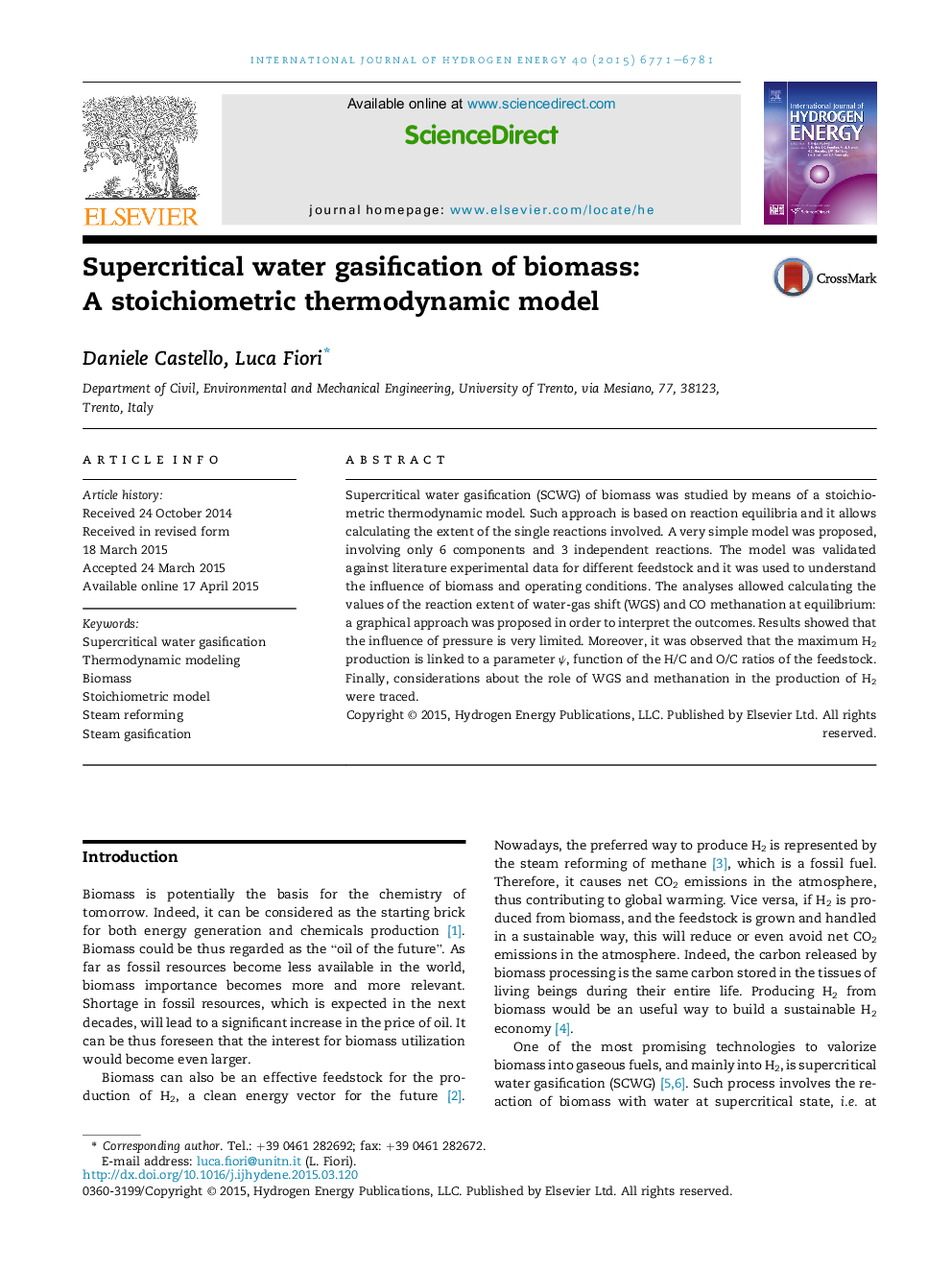| Article ID | Journal | Published Year | Pages | File Type |
|---|---|---|---|---|
| 1271188 | International Journal of Hydrogen Energy | 2015 | 11 Pages |
•A simple, effective stoichiometric thermodynamic model for SCWG was developed.•A graphical tool was developed to describe model outputs.•The contributions of water-gas shift and methanation were quantified.•Differences among feedstock were analyzed by defining the stoichiometric factor ψ.•The conditions leading to the maximum H2 production were investigated.
Supercritical water gasification (SCWG) of biomass was studied by means of a stoichiometric thermodynamic model. Such approach is based on reaction equilibria and it allows calculating the extent of the single reactions involved. A very simple model was proposed, involving only 6 components and 3 independent reactions. The model was validated against literature experimental data for different feedstock and it was used to understand the influence of biomass and operating conditions. The analyses allowed calculating the values of the reaction extent of water-gas shift (WGS) and CO methanation at equilibrium: a graphical approach was proposed in order to interpret the outcomes. Results showed that the influence of pressure is very limited. Moreover, it was observed that the maximum H2 production is linked to a parameter ψ, function of the H/C and O/C ratios of the feedstock. Finally, considerations about the role of WGS and methanation in the production of H2 were traced.
